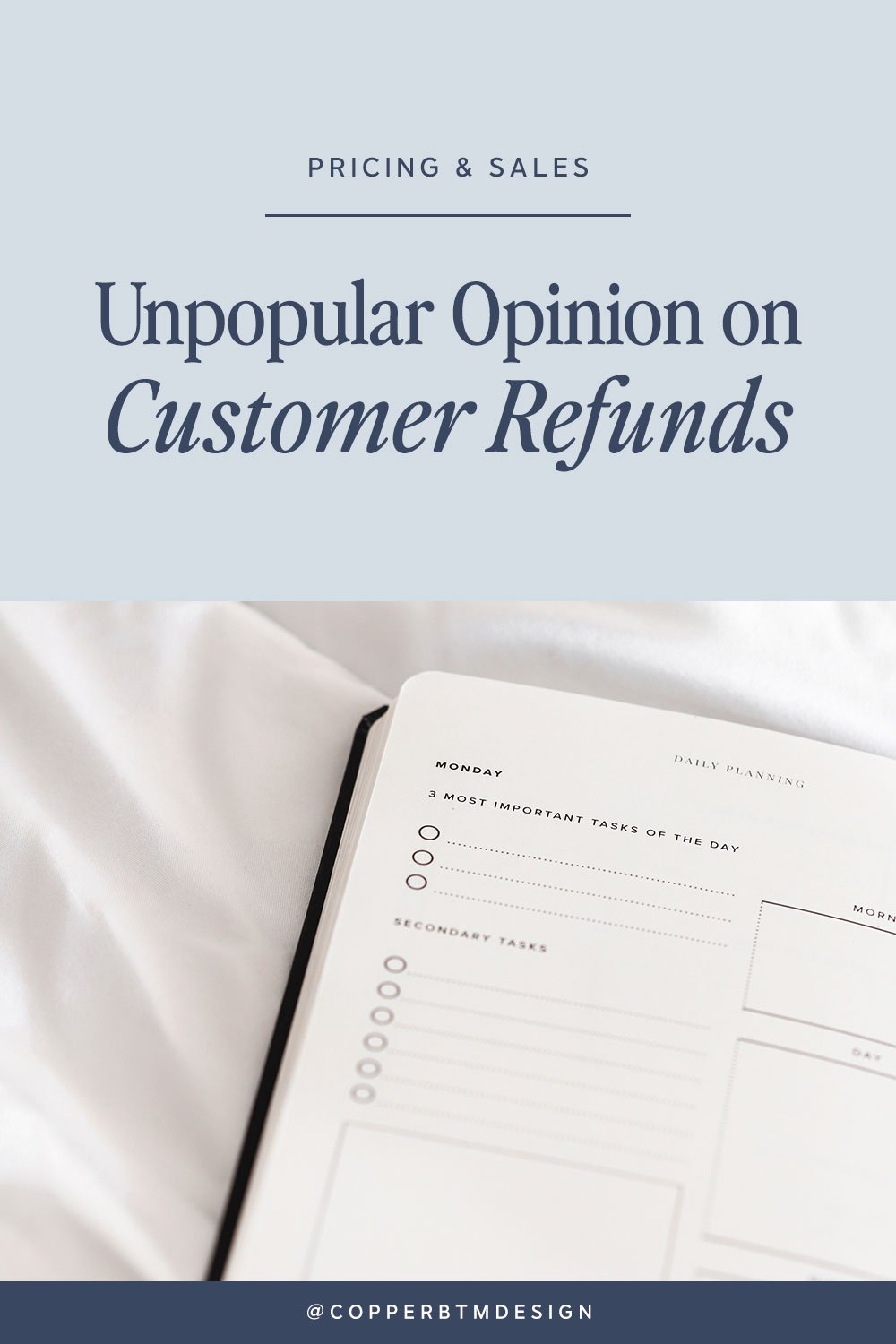Unpopular Opinion on Customer Refunds
Having to offer refunds is the biggest buzzkill for any business.
If there’s a defect or the product is damaged in some way, it’s a little easier to handle. . . . But what about those customers who just don’t like it?
Or have used the product and want to return it. Eek!
This can be super frustrating and make you want to say, “Absolutely NOT!”
And I get it. You put all of your effort, and money, into building the best product possible.
Plus, you have a business to run — you need to be thinking about your bottom line, and refunds won’t keep you in the black.
So, what do you do?
You accept the refund.
Yep. I said it.
Here’s the thing, your customer is returning the item because they’re unhappy in some way. As a business that caters to your customers, your goal should be to keep them happy. Delight them with every interaction.
By inquiring about a return, your customer is telling you that a return/refund will make them happy.
So my advice will almost always be to accept the return and refund the customer.
I firmly believe this goodwill will come back to you, ten fold.
Now, contradictory to this belief, I DO stand firm that your refund policy should state that you do not accept refunds due to the nature of planners being a dated product.
Or if you’d like to add little lenience, no refunds unless the planner is unopened or unused.
This policy helps prevent customers from asking for refunds for unnecessary reasons.
With that said, if someone still writes in to request a refund, I would honor their request and refund the purchase because that gesture will go a long way and offers your customer a good experience with your brand.
Have you been feeling inspired and ready to kick off the design process for your own custom planner?
I created a guide featuring 5 things your day planner MUST include . . . and it’s available now at the link below.

